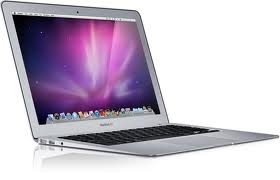Most Mac users have experienced a slow Mac at least once. Fixing a slow Mac is very easy and inexpensive since most of the solutions are free. The following solutions will help to fix your slow Mac.
1. Spring Clean Your Mac
You can fix a slow Mac by emptying the trash, reducing widgets and applications, and cleaning the desktop. To clean the desktop, remove all unnecessary things that can use your computer”s virtual memory and space and store them in a folder. Emptying the trash bin creates more free space on your Mac as well. Also, spring clean your Mac by removing unused or unwanted files, software, and applications that may be occupying valuable space. You should also remove widgets since they waste a lot of hard drive space.
2. Language Packs
When downloading or installing files on your computer, you will realize that there are additional language packs that come along with the files. These language packs occupy a lot of space and can slow your Mac. You can use programs such as MacKeeper, MacCleaner or Monolingual to remove language packs.
3. Check Your RAM
When fixing a slow Mac, you should check its RAM size and usage. If the RAM is being completely used by programs and services, it may cause the computer to be slow. You can solve this problem by increasing the memory/RAM on your Mac. Increasing the RAM on your Mac costs money. As such, you should use this solution when all the others fail.
4. Empty the Cache
There are numerous temporary files on any computer. These files should be deleted because they slow down the computer. If you are not certain which files you should delete, you should first create a backup folder. Afterwards, follow the steps outlined below:
a) Open the “Library” folder to access your “Cache” folder.
b) Move the Cache files to the trash bin and then empty the trash bin.
c) Restart your computer to determine if the problem is fixed. If it is fixed, delete the back-up folder.
5. Run the Disc Utility
All Mac computers come with a Disc Utility program that can fix a slow Mac. Most Mac users forget to run or use the program to solve small issues affecting the performance of their computer. To run the Disc Utility, you should follow the steps below:
a) Open “Disc Utility” and choose “Repair Disk Permissions”. You can verify whether the issue has been solved by choosing the “Verify Disk Permission” option.
b) Click on “Repair”. If permissions from web pages are altered or moved on your Mac, your computer may be slow. Running Disc Utility will solve this issue.
6. Use Programs To Fix the Issue
Going through your Mac and deleting everything that is causing it to be slow may take time. The best alternative is to use programs which can perform such tasks easily and quicker. Such programs will find, delete and fix all files that make your Mac to be slow. Some of the programs include Monolingual, MacKeeper and Clean My Mac. Monolingual removes unwanted language packs on your computer while MacKeeper cleans caches, language packs and files. Clean My Mac removes all unnecessary applications, extensions and files from your Mac. It also cleans and checks all files, logs and caches, among other things.
Know another tip? Let us know in the comments!


